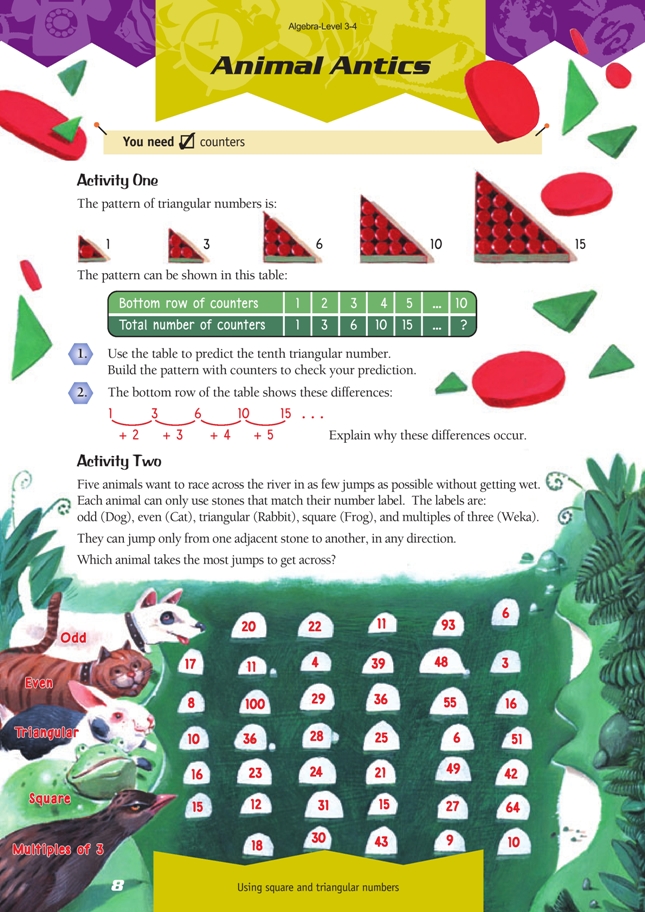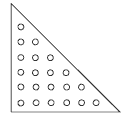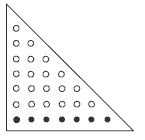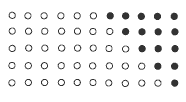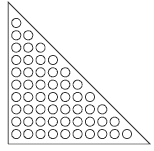This is a level 4 algebra strand activity from the Figure It Out series.
A PDF of the student activity is included.
Click on the image to enlarge it. Click again to close. Download PDF (330 KB)
explore triangular number patterns
counters
Activity One
The triangular numbers are an interesting set of numbers. They are particularly significant for later work in probability. Triangular numbers are not a linear pattern because the difference between successive terms is not constant. Therefore, level 3–4 students will need to use tables to find the tenth triangular number:
The differences grow by one each time because one more counter is needed to make the next row of counters. For example, here is the sixth triangular number, 21:
This must have a row of seven counters added to it to make the next triangle:
To make the triangles that follow, a row of eight will be added, followed by a row of nine, then 10, and so on.
So the triangular numbers are the sums of sets of consecutive counting numbers.
1 + 2 = 3
1 + 2 + 3 = 6
1 + 2 + 3 + 4 = 10
1 + 2 + 3 + 4 + 5 = 15
1 + 2 + 3 + 4 + 5 + 6 = 21
Consecutive counting numbers are always easy to add because they form pairs with the same total.
For example, consider
1 + 6 = 7, 2 + 5 = 7, 3 + 4 = 7. So the sum is 3 x 7 = 21.
The sum of consecutive counting numbers is always the sum of the first and last terms multiplied by half the number of terms (even if the number of terms is odd). Spatially, this is like rearranging a triangle to form a rectangle:
Following this pattern, the tenth triangular number can be calculated as (10 + 1) x 5 = 11 x 5 = 55.
Activity Two
Most of the animals could take several paths to cross the river, but the students need to find the path with the fewest jumps for each animal. Then they can find which animal has to take the most jumps.
For the triangular numbers, the students may need their table from Activity One to assist them because it is not easy to check these with mental calculation. All other sets of numbers can be confirmed using multiplication and division. For example, consider 36:
Is it odd? No, because the ones digit is even, that is, an odd number is not divisible by 2. Is it even? Yes, because the ones digit is even, it is divisible by 2.
Is it square? Yes, because a number times itself (6 x 6) gives 36.
Is it a multiple of 3? Yes, because 36 ÷ 3 gives an exact answer (12).
Answers to Activities
Activity One
1. The tenth triangular number is 55. One way of building the pattern is:
(Note: The number of counters in the bottom row is the same as the ordinal number of the triangle. For example, the tenth triangular number has 10 in the bottom row.)
2. The differences occur because each new line that is added to the triangle (to get the next triangular number) contains one number more than the previous line in the triangle does. This means that the difference between successive triangular numbers increases by one each time.
Activity Two
Frog (9 jumps, including the jumps off the start bank and onto the bank on the other side. The rest can do it in 7 jumps.)
